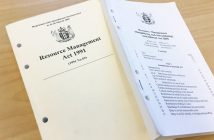Catastrophe modelling firm AIR Worldwide estimates that industry-insured losses from the magnitude 7.8 earthquake that struck near Hanmer Springs on November 14 will be between NZ$1.15 billion and NZ$5.3 billion. “More than 80,000 landslides and 2,600 aftershocks have been recorded following the massive earthquake that struck New Zealand’s South Island early this week,” says AIR worldwide assistant vice president Dr Bingming Shen-tu.
“The temblor was the largest experienced by the country since the 2009 M7.8 Dusky Sound earthquake and one of the four most powerful since 1855.
“Recovery efforts in the region have been additionally hampered by gale-force winds, heavy rainfall, and flooded roads.” The epicentre of the M7.8 earthquake, Kaikoura was cut off by landslides and lost its power, water supply, and sewage system. More than 134 buildings have been inspected in Kaikoura, resulting in 13 red tags denoting unsafe for use as well as 39 yellow tags denoting restricted use.
About 1,200 visitors and residents have been evacuated and a local state of emergency declared. The seabed in the area has been raised by up to two metres in places, likely impacting the local fishing industry. Christchurch appears to have experienced far less damage than it did in the devastating earthquakes that struck the area in late 2010 and early 2011, but has not escaped unscathed. Damage in the Canterbury area may account for up to 30 per cent of the total losses.
AIR says the fact that much of the impacted region is rural and sparsely populated helped limit the damage, but significant damage accounting for at least half of the losses from was reported in Wellington on the southern tip of North Island.
Throughout the impacted region, glass has been broken in buildings, chimneys have collapsed, and some structural damage has occurred.
Building contents breakage has occurred widely, and power outages, disruption of water and sewer services, and interruption of phone service are reported.
Some highways and rail lines in the affected region have been damaged, and many bridges and tunnels were closed after the initial quake pending inspection. Several multi-story buildings in Wellington experienced broken windows and contents damage, and the capital initially appeared to have escaped serious loss. Moreover, inspections raised concerns about 60 or so buildings in the centre.
While parts of the central business district were cordoned off because of damage to buildings, there was no “Red Zone” like the 859-day exclusion zone controversially established five years ago in Christchurch.
However, the nine-storey building at 61 Molesworth St in central Wellington is being demolished amid concerns it may collapse following the discovery of substantial damage in parts of the structure after the quake.
A demolition contractor has been hired to deconstruct the building using an 85-tonne excavator, while work to temporarily strengthen the multi-storey Reading Cinema car park in Tory Street is expected to start shortly. According to AIR, much of the central business district and waterfront of New Zealand’s capital is underlain by soft sediments, which amplify ground shaking and liquefaction damage has been reported there and on the Picton foreshore.
Wellington’s port operations were suspended by CentrePort because of shake and liquefaction damage to buildings and facilities, which was more extensive than during the 2013 Seddon earthquakes.
Container shipping operations currently remain suspended with many buildings still off limits, but most other services were up and running one week after the earthquake. Most residential damage will be covered by the government-owned insurer, the Earthquake Commission (EQC), which is backed by NZ$4.7 billion in reinsurance.
AIR’s modeled insured loss estimates include: • insured physical damage to property (residential, commercial/ industrial), both structures and their contents from ground shaking • demand surge—the increase in costs of materials, services, and labor due to increased demand following a catastrophic event—although not triggered by this event. • direct business interruption losses AIR’s modeled insured loss estimates do not include: • losses to uninsured properties • losses to land • losses to automobiles • losses to infrastructure • indirect business interruption losses • loss adjustment expenses.




